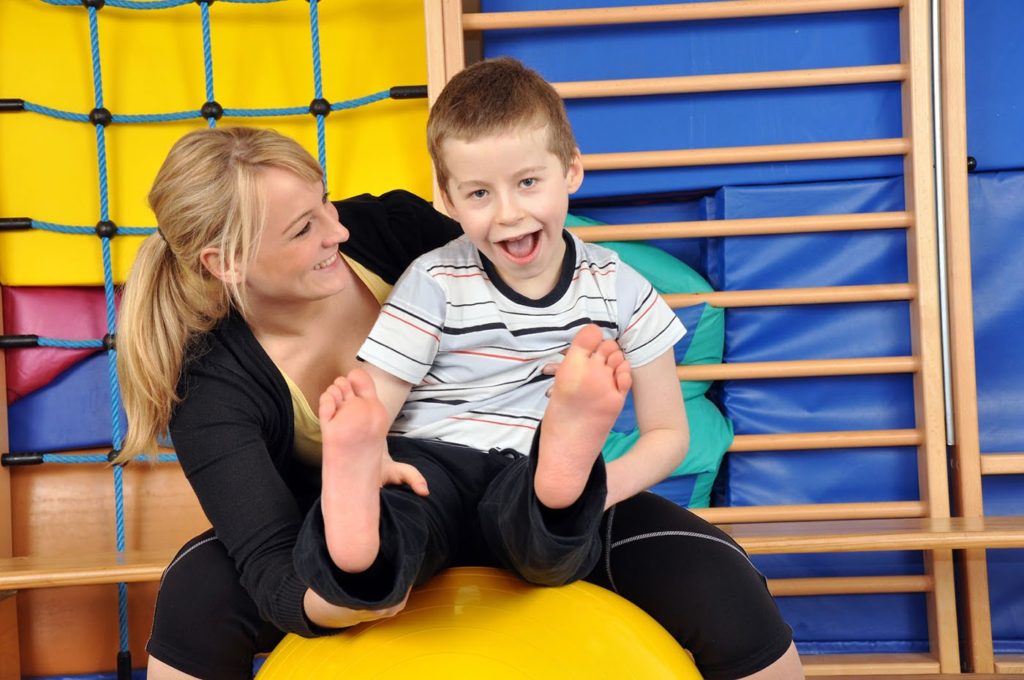You may have never thought of children as having “jobs”, but they really do!
Getting dressed, eating a variety of foods, holding and controlling a pencil, and reacting to sensory input (different sounds and textures) around them are all activities that can be included in a child’s “occupation”. For those who struggle with daily tasks like these and others, Occupational Therapy is a service provided by a skilled, certified professional that can help!
Let’s talk more about what Occupational Therapy (“OT”) is, and, if recommended for your child, what you can expect to happen during therapy sessions.
Support for Everyday Activities
One of a child’s most important “occupations” is to play! Play is powerful for so many reasons. Playing the appropriate way with toys, and advancing to different ways of playing as your child grows, are crucial for developing physical coordination, social skills, cognitive abilities, and language skills.
For little ones under 3 years-old, play skills that are considered to be “on track” include shaking a rattle, stacking rings, pushing a toy car, and building with blocks. If a child isn’t playing with toys like these in the way they’re intended, Occupational Therapy can help. Whether due to a developmental delay, medical diagnosis, neurological condition, or muscular disorder, an Occupational Therapist can provide an evaluation to assess your child’s play skills and create an individualized treatment plan.
How does an OT evaluate your child’s play? Through fun, play-based activities! Usually, through a combination of administering a standardized assessment and observing how your child interacts with a variety of toys, an Occupational Therapist creates specific goals for your child based on the assessment. The OT evaluation can also include a recommendation for therapy. Sometimes for example, OT is recommended once a week for an hour.
And what happens once your child starts weekly Occupational Therapy sessions? A whole lot of fun! To develop your child’s play skills, an OT may create activities that provide just the right amount of challenge. The therapist will choose toys that work on specific skills your child could benefit from developing (for example, a toy piggy bank with plastic coins to help your child practice putting a small object inside of another toy).
Assistance for Mastering Motor Skills
If you take a second to think about how often we ask our children to complete specific tasks with their hands, it’s a lot! Tying shoes, buttoning buttons and snaps, pulling zippers, cutting with scissors…kids need to develop strong fine motor skills to perform several everyday tasks.
Looking over expected fine motor milestones can give you an idea of whether he or she is developing these skills at the appropriate ages. If you have concerns, you may want to consider scheduling an Occupational Therapy Evaluation. The therapist will test your child’s ability to complete various fine motor tasks and talk more with you about the typical order or development for these activities, which require use of smaller muscles (like the hands and fingers). Feeling like your child isn’t as coordinated as he or she should be? OT can help with that too! An Occupational Therapist may evaluate your child’s gross motor skills – those that require him or her to use larger muscle groups. That can include having enough hand-eye coordination to throw and catch a ball, or complete an obstacle course.
When a child receives OT for motor abilities, the therapist will likely ask your child to complete different tasks with their body to improve the skills they are behind in. This could be anything from doing jumping jacks, to using tweezers to pick up marbles in a game, to tracing letters.
The best part is that these activities can build your child’s confidence and he or she might not even realize they are doing “work”!
Help for Processing Sensory Input
Children are active, and that’s a fact. But sometimes red flags arise when a child has more difficulty sitting still than would be expected. He or she might crave the input to their senses that they get when actively moving around, which can interfere when it’s time to complete a task like staying on their mat during circle time at preschool. Occupational Therapy can help.
Other types of sensory processing difficulties kids can show are being uncomfortable touching a variety of textures with their hands, picky eating or aversions to certain textures of foods (crunchy, soft, mixed), and trouble tolerating different types of auditory input (like reacting too much or too little to sounds around them).
When your child receives Occupational Therapy for sensory processing difficulties, the OT can create what’s called a “Sensory Diet” for him or her. This is a customized series of physical activities your child can do at home to ensure their body is getting the sensory input they need at an appropriate time. That way, it’ll be easier for your child to participate when it’s time to sit still during class later. Occupational Therapy can include a variety of activities to help your child tolerate sensory input, like playing with a fun at-home sensory wall.
If you have any concerns about your child’s sensory or motor development, you may want to consider an Occupational Therapy Evaluation. TherapyWorks is a company that provides Speech, Occupational, Feeding, Physical Therapy, and Social Work Services via teletherapy – a safe, convenient, and effective option.







